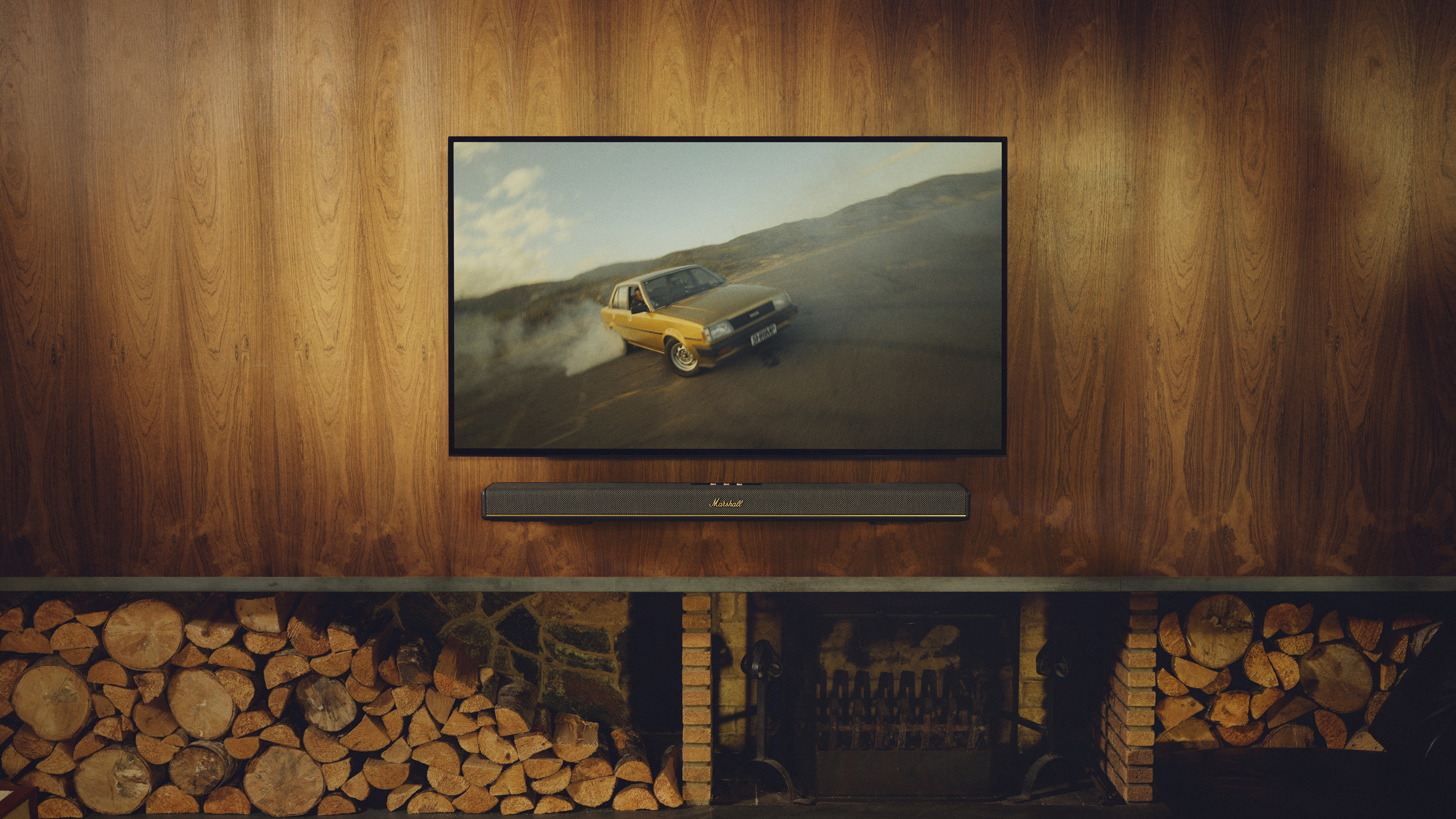
Everyone loves spatial audio, of course. After all, if what George Lucas said is true and that 50 percent of the enjoyment of a movie comes from its soundtrack, then the more immersive and enveloping that soundtrack is the better.
True spatial audio is a logistical nightmare, though. The idea of in-ceiling speakers is enough to put most people off, and the requirement for an array of front left, right and centre speakers (with perhaps some width channels thrown in too) is going to play havoc with most people’s idea of interior decor. Which is why the concept of the soundbar that’s able to give an impression of spatial audio has become so popular so fast.
In my work as a tester and reviewer of audio equipment, I’ve encountered numerous soundbars with pretensions to spatial audio. Some use an array of actual speaker drivers facing in various directions in order to reflect sound off boundary walls and ceiling to create the spatial audio effect, some use digital signal processing in an effort to spread sound as far and wide as possible, and some use a combination of the two. And some, it’s fair to say, are a fair bit more successful at it than others.
These three are currently the best of the lot, though. Yes, you can buy a soundbar that promises spatial audio for less money than these - but if it’s a genuine sensation of spatial audio you’re after from a single enclosure, well, it’s going to cost you. What makes these three soundbars so compelling is that they, unlike quite a few nominal alternatives, sound like every penny’s-worth.
T3's Top 3
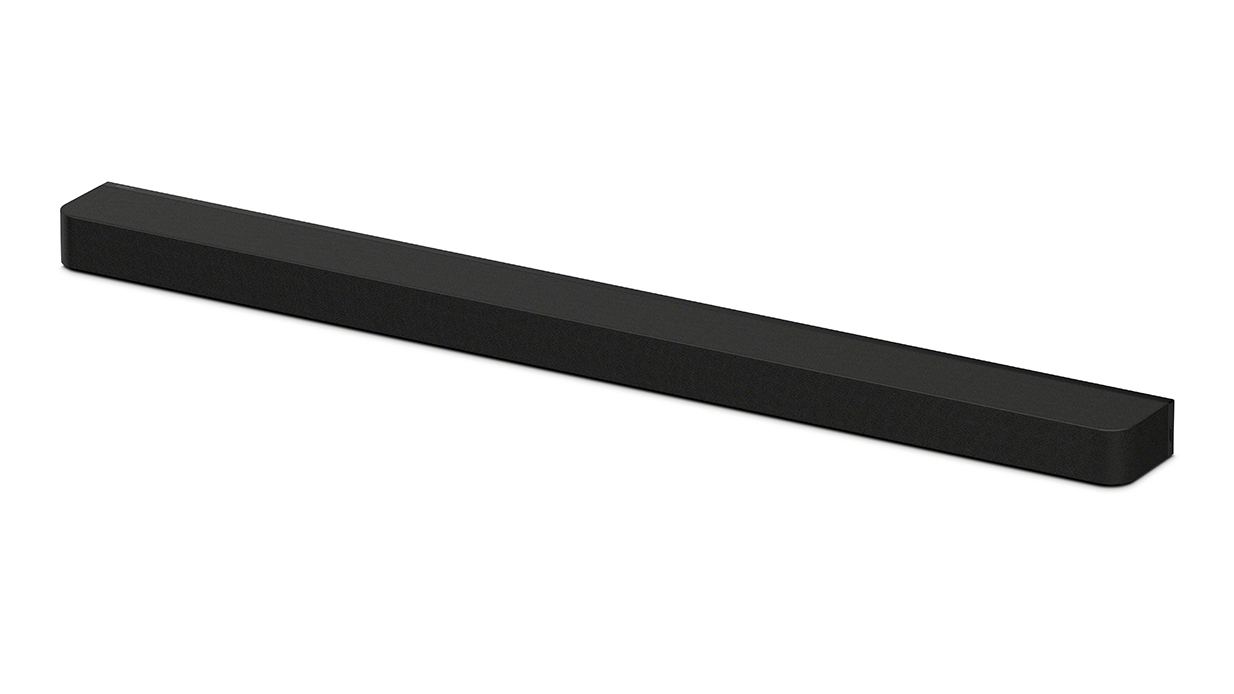
The Bravia Theatre bar 9 is a stand-alone spatial audio soundbar – and, what’s more, a really good one, thanks to its ability to create a large and cohesive sound that’s way bigger than the soundbar itself. As and when you feel the need, though, Sony will sell you a pair of wireless rear speakers and/or a wireless subwoofer to match – so you can go from ‘virtual spatial audio’ to ‘actual full-on spatial surround sound’ without having to trail cables all over your room.
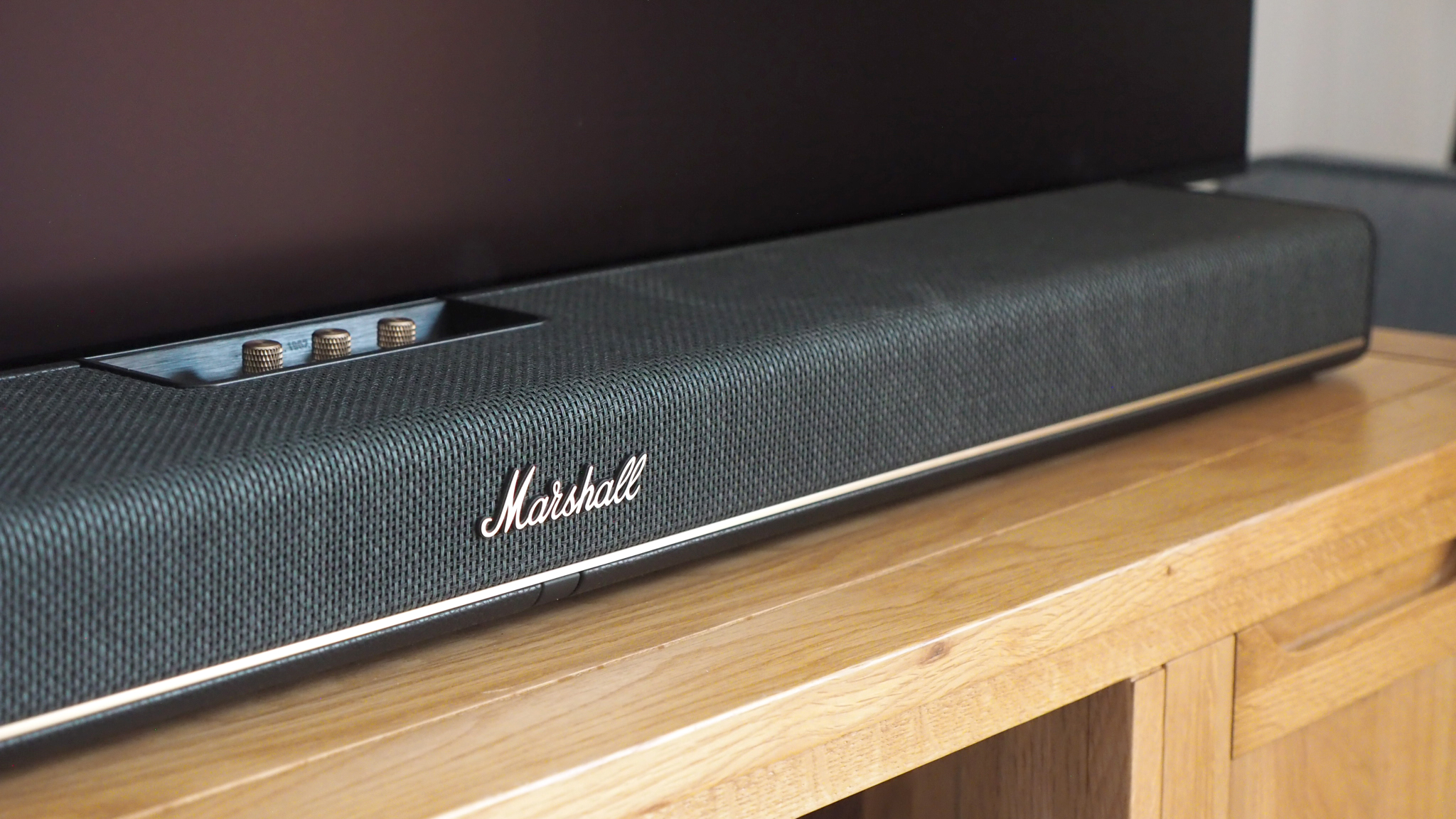
Rely on Marshall to serve up an individual looker in a world of ‘me too!’ soundbar design. It takes its cues from the company’s iconic backline amplifiers, of course – but what’s remarkable is how well this aesthetic translates to a long, slim speaker. The rotary dials add a further dash of on-stage purpose, and the big, confident brand logo seals the deal. Of course, if the Heston 120 didn’t perform then it would be all style and no substance – but happily that’s not even close to being the case.
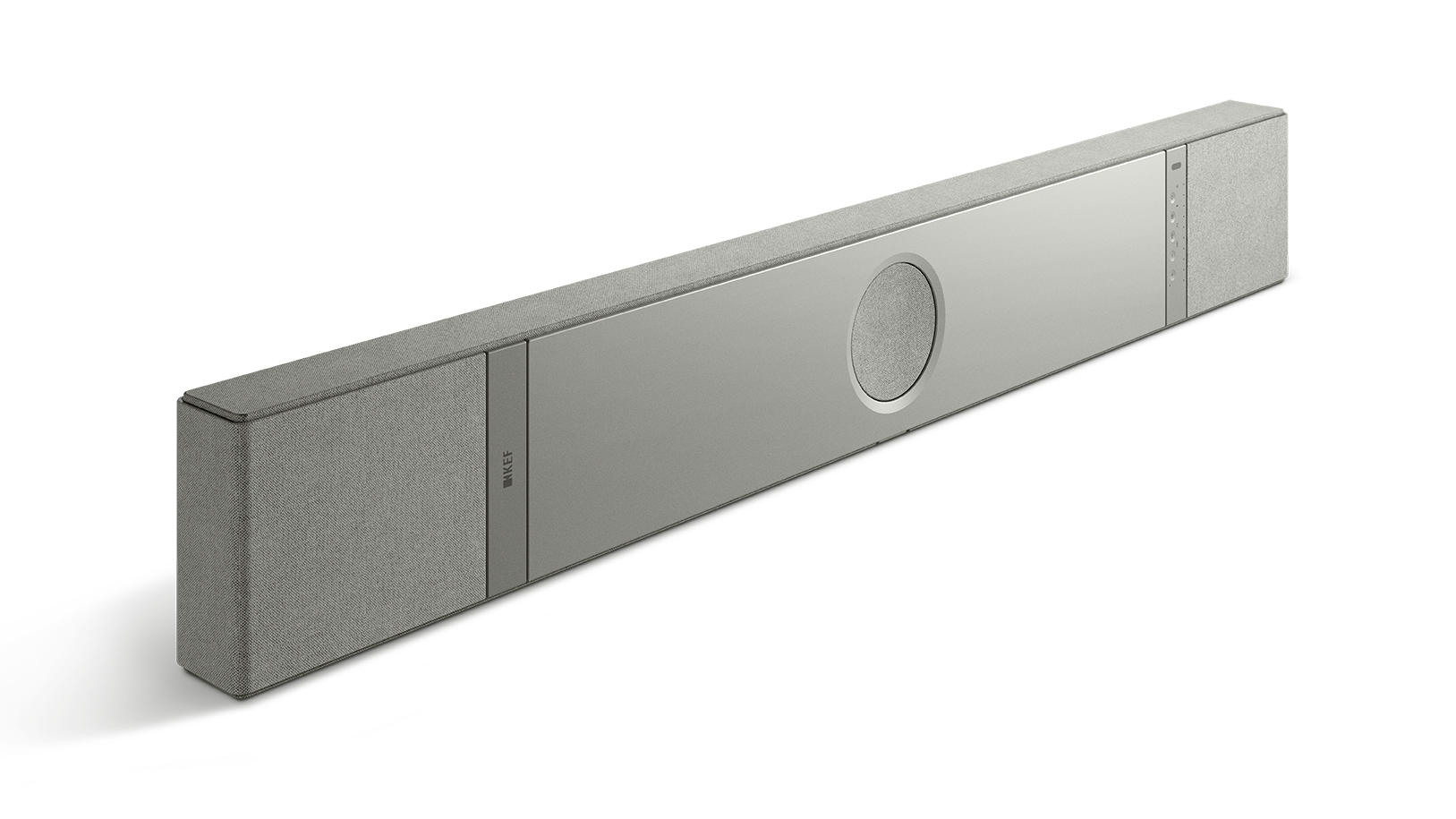
KEF took its time getting aboard the ‘spatial audio soundbar’ bandwagon, and when it finally delivered its product the asking price raised more than one or two eyebrows. But remarkably, the XIO has proved to be both worth the wait and worth the money – as long as you can give it the sort of breathing space it requires, the XIO can fling sound high and wide, creating a dome of sound that’s closer to true spatial audio than any standalone soundbar has been able to manage up to now.
Best Price
Everything’s relative, of course, and it all depends on how you look at it – but when you consider the Marshall Heston 120 costs £899 ($999) and the Sony Bravia Theatre Bar 9 goes for £999 ($1399), the only way they can be thought of as in any way ‘affordable’ is when you line them up against the £1999 ($2500) KEF XIO.
In each case, the money buys a substantial speaker – the Marshall is 76 x 1100 x 145mm (HxWxD), the KEF is 70 x 1210 x 165mm, and the Sony a whopping 64 x 1300 x 113mm. It follows that each one of them is going to look disproportionate underneath a TV of any less than one of the best 55-inch sets or larger.
You can be sure your money is buying a very high standard of construction and finish, though – and in the cases of the KEF and the Marshall in particular, a quite individual aesthetic in a product category that has generally ignored ‘design’ in favour of ‘functionality’. Yes, an expensive spatial audio soundbar like these has to be designed around the need for a lot of drivers and a lot of amplification – but here’s your proof that your soundbar doesn’t have to embody visual tedium.
Get all the latest news, reviews, deals and buying guides on gorgeous tech, home and active products from the T3 experts
Each soundbar has the specification you’d demand, given how expensive they are – or, at least, they mostly do in most cases. Each is compatible with Dolby Atmos and DTS:X spatial audio formats, and the KEF and Sony can deal with Sony 360 Reality Audio too. Each has Bluetooth and Wi-Fi wireless connectivity as well as physical inputs, and each has a clean and extensive control app that’s the most effective way to operate the device.
It’s the question of ‘physical inputs’ that undermines the KEF XIO more than a little here, though, especially when you keep the asking price uppermost in your mind. Both the Marshall and the Sony have HDMI passthrough – so those customers with large systems and TVs with only one HDMI eARC socket will know how useful a feature this is. Quite how KEF has decided that a state-of-the-art soundbar costing this much would be fine without this feature is quite a head-scratcher.
What's Unique With Each Product?
Each of these companies has gone out of its way to produce a special product here, of course – and, to a lesser or greater extent, each has succeeded. And though they are quite similar in some ways (inevitably, given what it is they’re trying to achieve), they are each quite distinct at the same time.
KEF XIO
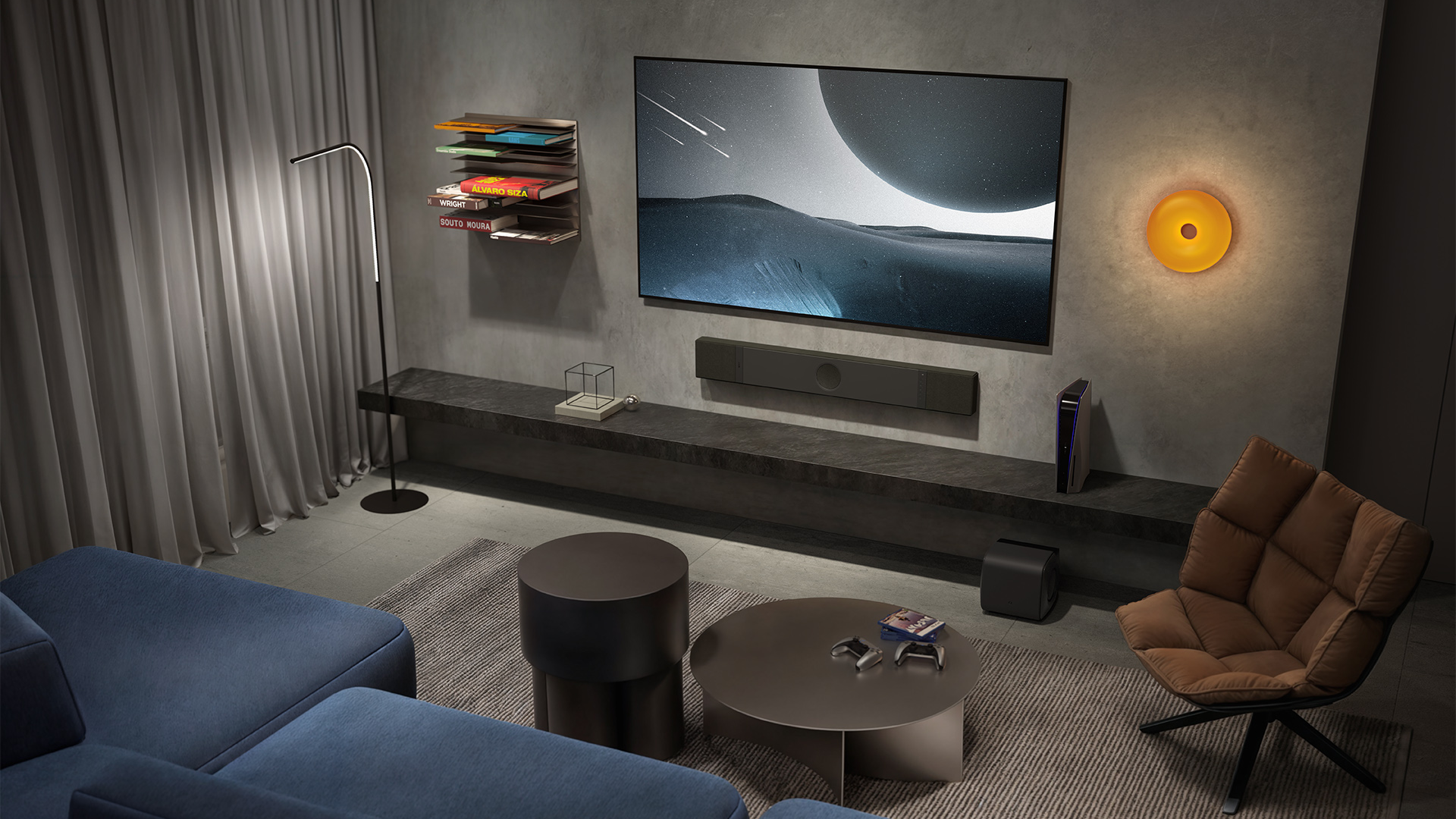
The KEF is the greatest tour de force where technology is concerned – the asking price demands this be the case, doesn’t it?
For instance, it features four ‘racetrack’ low-frequency drivers arranged in two back-to-back pairs to negate any unwanted vibrations, and with ‘P-Flex’ surrounds that KEF reckons allows each one to generate the bass presence of a much larger driver.
It has six ‘UniQ MX’ midrange/high frequency drivers, each with a clever mechanical crossover that allows each part of the dual-diaphragm layout to operate independently.
One of those drivers only comes into play when you wall-mount the XIO – it’s the one behind the circle of acoustic cloth. And the KEF can generate 820 watts of peak power – which I think we can all agree should be plenty.
Marshall Heston 120
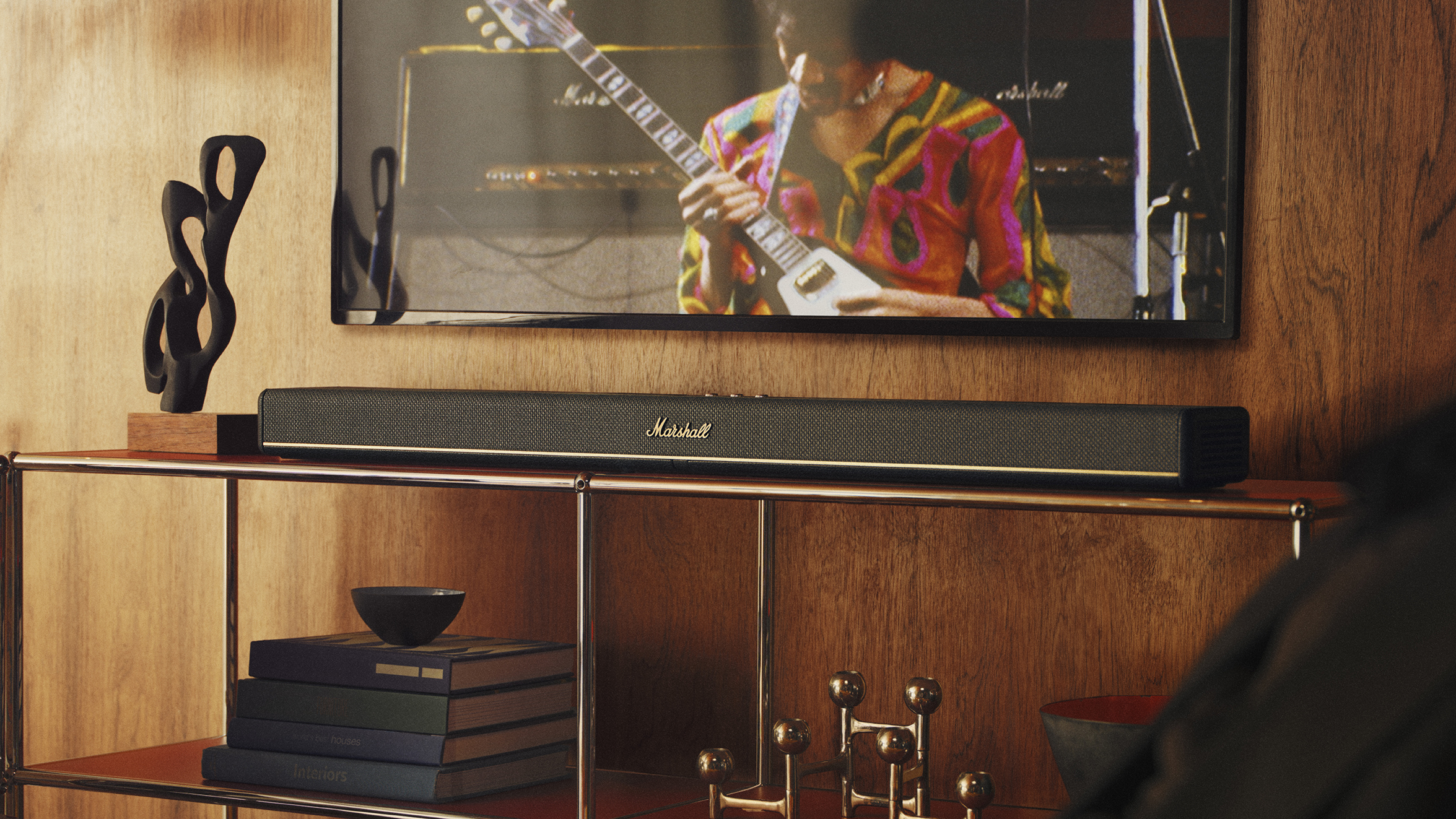
Marshall hasn’t scrimped where the hardware is concerned, either.
The Heston 120 features 11 drivers of various shapes and sizes, all carefully angled to give the best chance of creating the sonic height and width that’s basically the whole point of spatial audio, and equipped each one with its own individual block of Class D amplification.
It’s made sure that its HDMI sockets can deal with top-of-the-ship 4K/120Hz content and Dolby Vision for high dynamic range.
Then it’s added three fairly large rotary dials to handle physical control and, by way of an eco-related encore, ensured that a good portion of the Heston 120 is repairable and/or replaceable.
Sony Bravia Theatre Bar 9
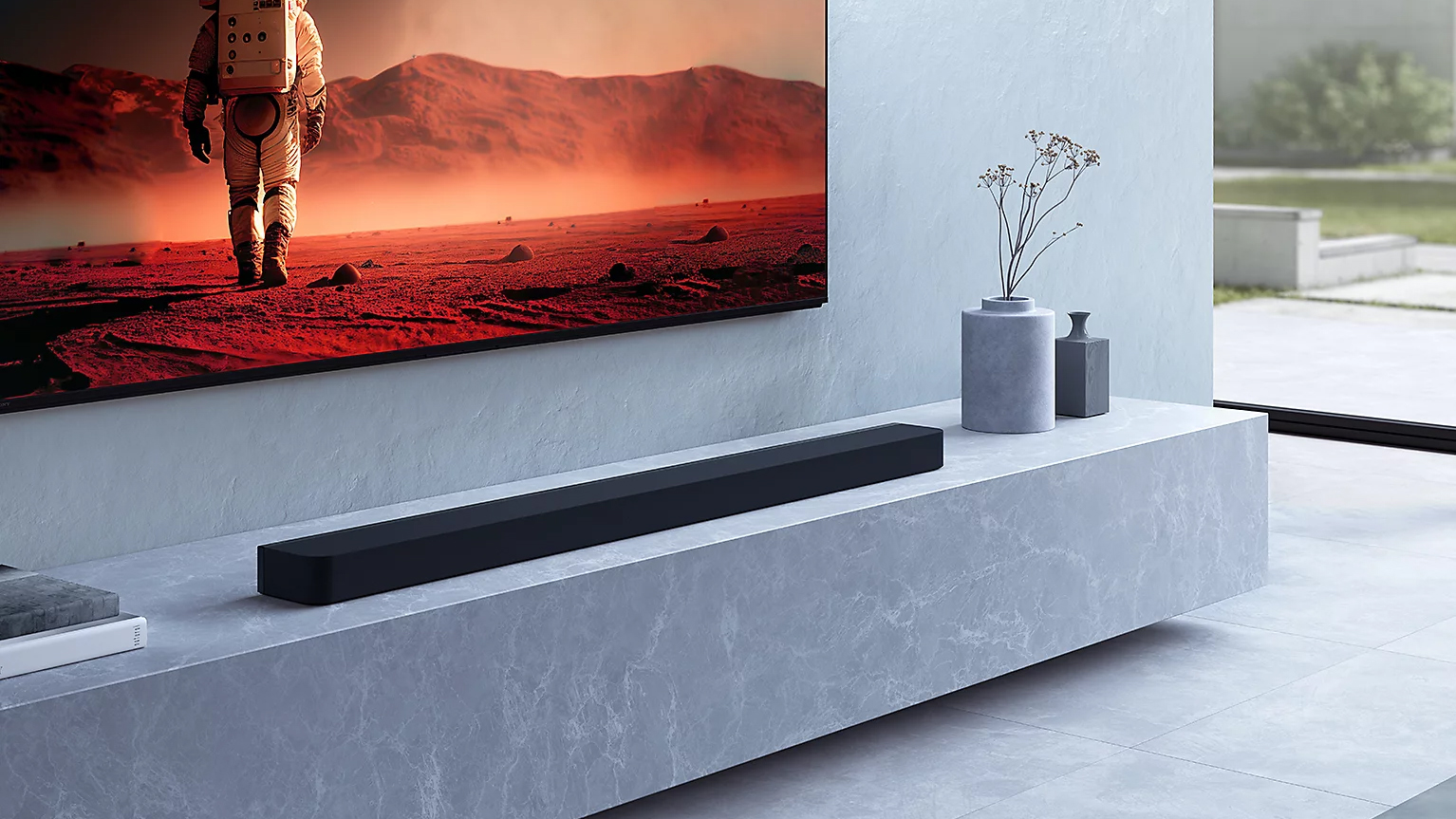
Remarkably, the Sony Bravia Theatre Bar 9, despite being the largest soundbar here, is actually significantly smaller than the model it replaces – which is good news for those of us who live in ordinary, house-sized houses.
There’s still room for 13 speaker drivers, mind you – and although Sony is coy about the amount of power deployed in order to drive them, once you hear the Bar 9 in action you’ll realise it’s more than enough.
There’s Dolby Vision HDR and plenty of gaming-related compatibility via its HDMI loop, and the company’s unique ‘S-Centre Sync’ output means an appropriate Sony TV can become the centre channel of the sound – which naturally helps no end with voice-location.
Which sounds best?
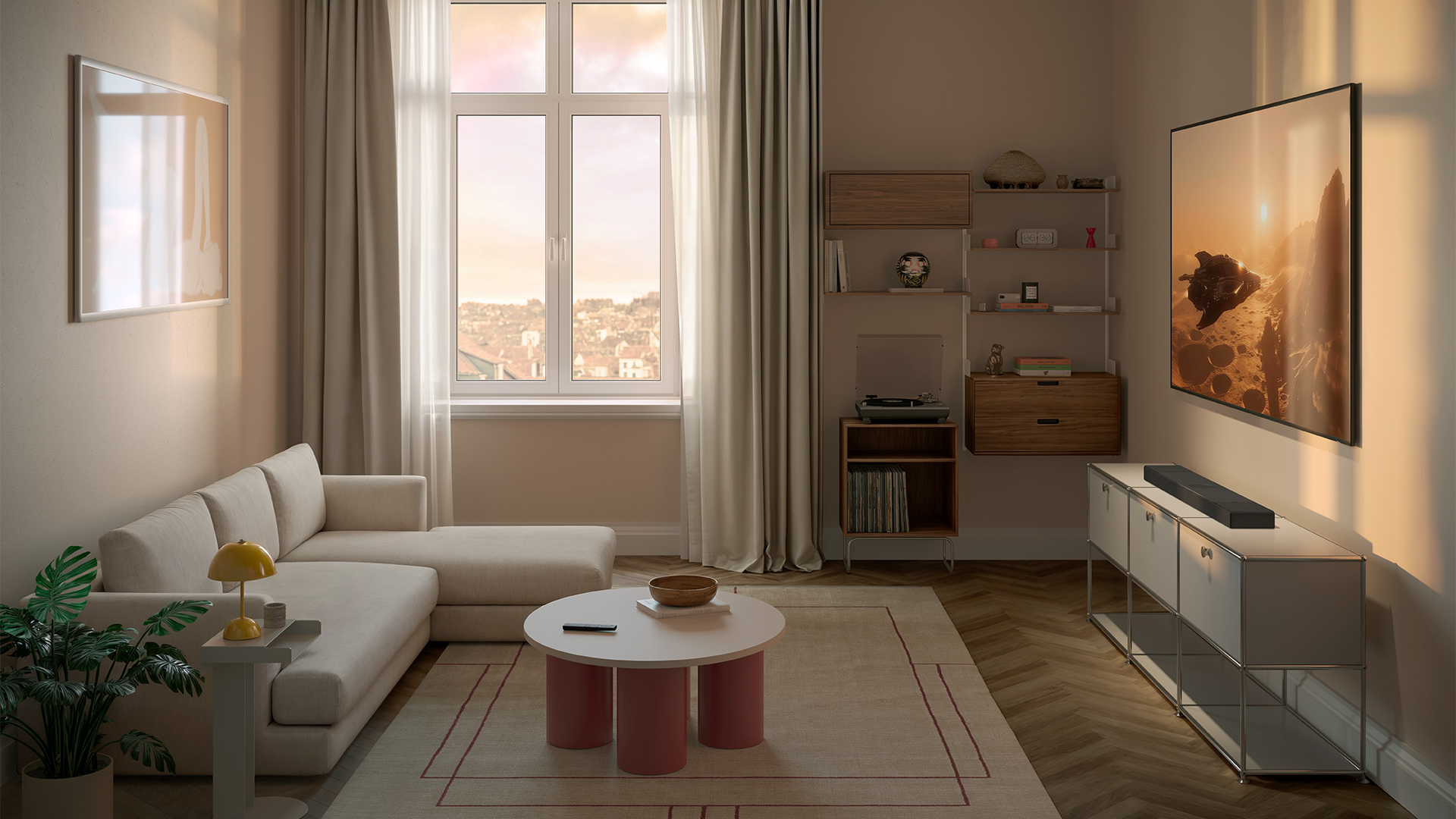
As with any kind of speaker, ‘best’ is a slightly tricky one to answer. The sound that one person finds most agreeable won’t automatically be to the taste of the next person. But when it comes to spatial audio – or, at least, the size of the spatial audio sound, its definition, and the way effects are located within it, we most definitely have a winner here.
Mind you, the KEF XIO costs more than the other two soundbars combined – so if it wasn’t the best-sounding spatial audio soundbar of the three, then something most definitely could be said to have gone wrong.
But when it’s given a Dolby Atmos or DTS:X soundtrack to deal with, the XIO is capable of creating an authentic ‘dome’ of sound that extends impressively in all directions – the distances between front/back, left/right and top/bottom are considerable.
Detail levels are high, effects steering is convincing… and the KEF is capable of remarkable low-frequency presence and impact, too. Yes, it has wired and wireless options from an external subwoofer – but it’s by no means certain you need them.
The Marshall Heston 120 is no slouch, either. Its sonic attitude is big and bold, but it’s carefully organised and has a real facility with detail retrieval. Dynamic headroom is ample, the spatial aspect of its sound is very competitive, and the soundbar integrates its complement of drivers so well that effects can travel smoothly from one extreme of the soundstage to another in a very convincing manner.
If it’s ‘insight’ and ‘precision’ you crave from your spatial audio soundbar, the Bravia Theatre Bar 9 has you covered. Oh, it can do the crash/bang/wallop stuff that’s so beloved of a Hollywood soundtrack without any problems, and it can describe a gratifyingly expansive spatial audio soundstage without too much difficulty too – but where it really scores is with the accuracy of its placement and the remarkable facility it has for teasing out even the most minor, most fleeting details and harmonic variations.
Overall winner
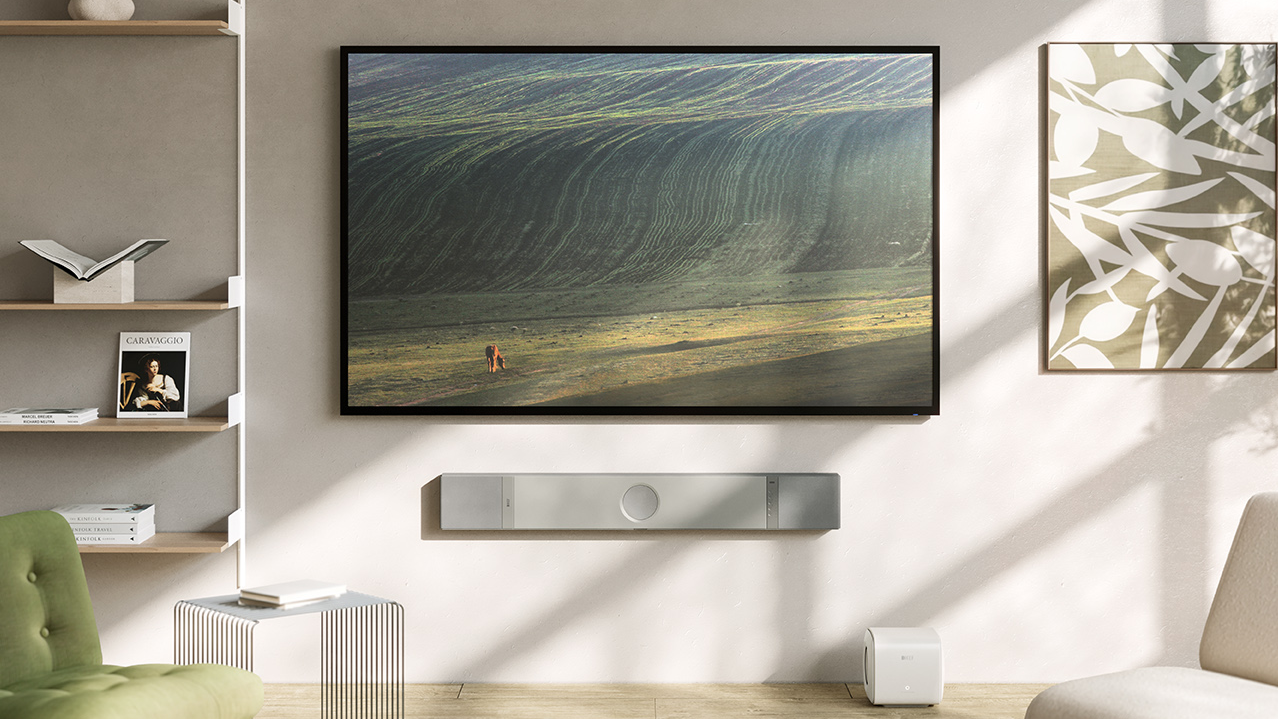
If it was my money, and I had quite a lot more of it available for a soundbar than in actual fact I do, I’d spend it on the KEF XIO in a heartbeat.
I’ve heard profoundly impressive spatial audio soundbars before – the original Sennheiser Ambeo from 2020 springs to mind – but never that combined convincing spatial audio sound and prodigious low-frequency presence with understated looks with quite such panache.
The XIO is the best-sounding spatial audio soundbar around at the moment, period - although I do have its lack of HDMI passthrough nagging at me…
Mind you, if I’m keeping my spend on the right side of the ‘vaguely realistic’ line then I don’t imagine being disappointed with either the Marshall Heston 120 or the Sony Bravia Theatre Bar 9 either.
The Sony manages to be the sort of deft and informative listen that’s quite strongly at odds with its physical appearance, while the Marshall has visual drama, as well as strong spatial audio performance, on its side.
Honourable mentions
The Sonos Arc Ultra is the best speaker in the entire Sonos range, which is not the faint praise it might, at first, look like. It’s a trust exercise with Sonos at the moment, though. As much as the company might seek to draw a line under it, the Whole App Fiasco will live long in the memories of consumers and reviewers alike, and I think it will be a while before the company inches back to the position of ubiquity it once enjoyed.
Or you could just go the whole hog and spend out on Samsung’s remarkable HW-Q990F. A big soundbar, a subwoofer and a pair of not-quite-so-big rear speakers make up the package – it’s pricey, sure, but not KEF pricey, and it means true surround-sound as well as very impressive spatial audio performance. Mind you, it also means a whole lot of speakers…
Simon Lucas is a freelance technology journalist and consultant, with particular emphasis on the audio/video aspects of home entertainment. Before embracing the carefree life of the freelancer, he was editor of What Hi-Fi? magazine and website – since then, he's written for titles such as Wired, Metro, the Guardian and Stuff, among many others. Should he find himself with a spare moment, Simon likes nothing more than publishing and then quickly deleting tweets about the state of the nation (in general), the state of Aston Villa (in particular) and the state of his partner's cat.
You must confirm your public display name before commenting
Please logout and then login again, you will then be prompted to enter your display name.

